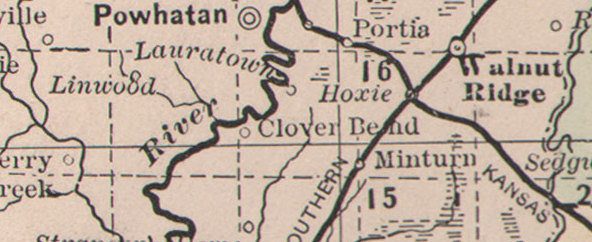Walnut Ridge mayor pulls support for merger with Hoxie, cites lack of unity and declining revenues
by March 21, 2017 10:09 pm 613 views

The movement to merge Walnut Ridge and Hoxie into one town in Lawrence County is likely dead. The consolidation’s staunchest supporter, Walnut Ridge Mayor Charles Snapp, told Talk Business & Politics that Hoxie’s declining revenues and a lack of unity around the move has prompted him to pull his support. Hoxie needs to stabilize its revenue streams before he will consider supporting the merger in the future, he said.
“Hoxie has cash on hand, but the risk-to-reward ratio is marginal at best … the numbers tell the real story,” Snapp said. “It’s not the cash on hand. It’s the steadily declining income that tops the scale … I must go on the record as opposing the consolidation with Hoxie at this time.”
Hoxie Mayor Lanny Tinker said he was shocked by the Tuesday afternoon announcement by Snapp. Tinker has tacitly opposed the consolidation and said at one point he felt like this was “turning into a hostile takeover” of his hometown. He hopes the two communities that border each other in the heart of Lawrence County can remain independent, but unified moving forward.
One point of contention for many in Hoxie was that Walnut Ridge officials appointed a committee to research the issue, but didn’t include anyone from Hoxie. If a joint committee had been appointed to study the issue and give a recommendation, it might have alleviated some concerns held by Hoxie residents, Tinker said.
The Economic Impact Committee (EIC) has been disbanded, Snapp said. Walnut Ridge consolidated with nearby College City last year and the benefits to residents in both communities was surprising. The newly formed city saved almost $100,000 in duplicated services and expenses and it was natural to explore a consolidation with Hoxie, he said. The two towns are contiguous and the combined population would be more than 8,100 residents, making it the 11th largest city in Northeast Arkansas, and the 46th largest in the state.
Hoxie has more than $1 million in its coffers, but the EIC determined its revenues have been in decline during the last five years. Revenues have declined from about $885,000 in 2012 to $844,000 last year, according to numbers released.
Snapp said the EIC didn’t make a recommendation. Its sole purpose was to determine what the impact to Walnut Ridge would be. The lack of unity and discord among some Hoxie residents and political leaders who are leery of the consolidation sealed Snapp’s decision, he said.
“It seems apparent, coming from the Hoxie political leadership that the town of Hoxie desires to remain independent and does not desire a consolidation with Walnut Ridge,” Snapp said. “I respect that decision.”
Citizens could still start a petition to get the initiative on the ballot. At least 97 Hoxie voters who voted in the last election would have to sign the petition, while the about 220 Walnut Ridge voters would have to sign. Without Snapp’s support, the initiative probably won’t pass if it does make it to the ballot, Tinker admitted.
If the two towns consolidate and eliminate the replication of some services within the fire, police, and sanitation departments, the new town could have revenues around $2.95 million, with projected expenses of $2.525 million. That would be a surplus of about $279,525, but it’s only an estimate.
Fees, water, and sanitation rates differ slightly in both towns, but would virtually remain the same. Walnut Ridge has an ISO rating of 3, while Hoxie has an ISO rating of 5. There are a lot of differences between the two, meaning Walnut Ridge residents and business owners pay less for insurance based on those ratings. How much it could potentially save Hoxie residents is hard to calculate, but they could be lower if the requirements for the lower ISO rating could be applied to Hoxie. ISO ratings are based on several factors including the fire department operations, hydrant availability, and water line pressure. Many water lines in Hoxie would have to be replaced.
One of the most striking facts that came to light during the study is Hoxie only generates about $15,000 per month in sales tax revenues, while Walnut Ridge generates about $70,000 per month. Even if the two joined, the combined sales tax numbers would drag far behind Pocahontas, which would have almost 1,500 fewer residents. In fact, the town would be 11th in population in the region, but would only be 16th in generating sales tax revenue.
Hoxie recently formed a committee to explore consolidation impacts. Officials remained mum Tuesday afternoon as to whether the committee will be disbanded.
